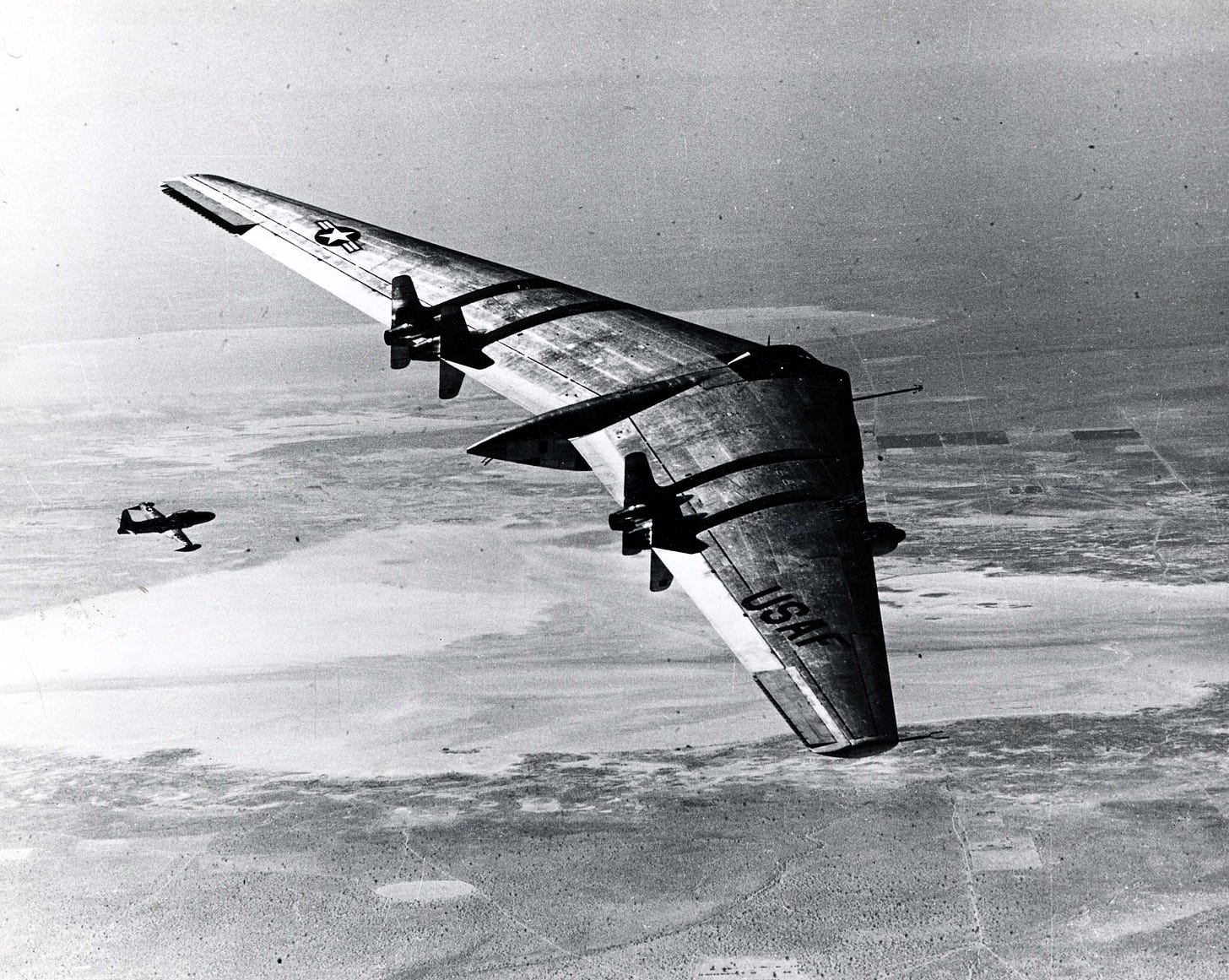The Flying Wing
The YB-49 and the birth of stealth aircraft
The YB-49 Flying Wing was a revolutionary aircraft developed by the Northrop Corporation in the late 1940s. Its design, characterized by its lack of a traditional fuselage and tail, was ahead of its time. The flying wing's futuristic appearance still captivates aviation enthusiasts today.
One of the YB-49's most remarkable features was its early exploration of stealth technology. Its unique shape reduced radar cross-section and made it challenging for enemy radar to detect. Although the YB-49's stealth capabilities were not as advanced as those of the B-2 Spirit, it laid the foundation for future stealth aircraft, including the B-2.
The YB-49's legacy lives on through its successor, the B-2 Spirit. The B-2, which entered service in the early 1990s, pushed the boundaries of stealth technology even further. Its design, advanced materials, and radar-absorbing coatings made it virtually invisible to enemy radar, a feat that would not have been possible without the innovations of its big brother.
Now, here's the surprising twist, the concept of the flying wing wasn't exclusive to the YB-49. The German Horten brothers, Reimar and Walter, were pioneers in the development of flying wing aircraft during World War II. Their experimental Ho 229, also known as the Horten 229, shared the YB-49's unique design elements and advanced aerodynamics.
The Horten 229, like the YB-49, aimed for lighter weight, lower drag and stealth. Though it never saw combat during the war, it left a significant impact on aviation history and influenced the design of subsequent flying wing aircraft.



